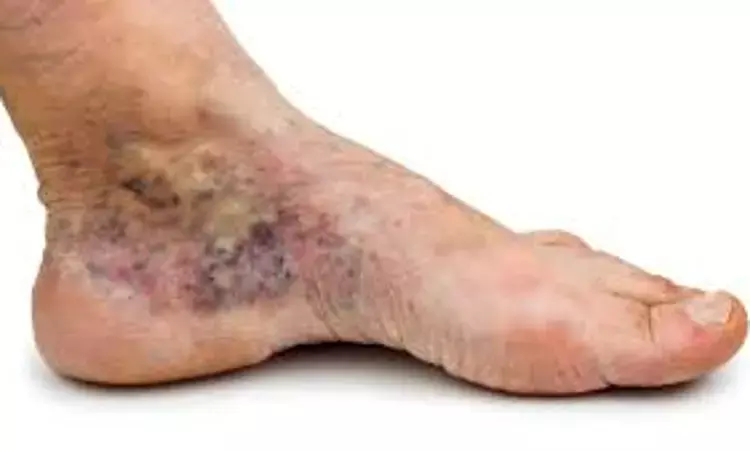- Home
- Medical news & Guidelines
- Anesthesiology
- Cardiology and CTVS
- Critical Care
- Dentistry
- Dermatology
- Diabetes and Endocrinology
- ENT
- Gastroenterology
- Medicine
- Nephrology
- Neurology
- Obstretics-Gynaecology
- Oncology
- Ophthalmology
- Orthopaedics
- Pediatrics-Neonatology
- Psychiatry
- Pulmonology
- Radiology
- Surgery
- Urology
- Laboratory Medicine
- Diet
- Nursing
- Paramedical
- Physiotherapy
- Health news
- Fact Check
- Bone Health Fact Check
- Brain Health Fact Check
- Cancer Related Fact Check
- Child Care Fact Check
- Dental and oral health fact check
- Diabetes and metabolic health fact check
- Diet and Nutrition Fact Check
- Eye and ENT Care Fact Check
- Fitness fact check
- Gut health fact check
- Heart health fact check
- Kidney health fact check
- Medical education fact check
- Men's health fact check
- Respiratory fact check
- Skin and hair care fact check
- Vaccine and Immunization fact check
- Women's health fact check
- AYUSH
- State News
- Andaman and Nicobar Islands
- Andhra Pradesh
- Arunachal Pradesh
- Assam
- Bihar
- Chandigarh
- Chattisgarh
- Dadra and Nagar Haveli
- Daman and Diu
- Delhi
- Goa
- Gujarat
- Haryana
- Himachal Pradesh
- Jammu & Kashmir
- Jharkhand
- Karnataka
- Kerala
- Ladakh
- Lakshadweep
- Madhya Pradesh
- Maharashtra
- Manipur
- Meghalaya
- Mizoram
- Nagaland
- Odisha
- Puducherry
- Punjab
- Rajasthan
- Sikkim
- Tamil Nadu
- Telangana
- Tripura
- Uttar Pradesh
- Uttrakhand
- West Bengal
- Medical Education
- Industry
Rivaroxaban & aspirin benefit PAD patients undergoing lower extremity revascularization: study

Patients with peripheral artery disease (PAD) undergoing lower extremity revascularization (LER) benefit from low-dose rivaroxaban and aspirin therapy, suggests a study published in the Circulation.
Patients with peripheral artery disease (PAD) are at heightened risk of acute limb ischemia (ALI), a thrombotic event associated with amputation, disability, and mortality. Prior lower extremity revascularization (LER) is associated with increased ALI risk in chronic peripheral artery disease (PAD). However, the pattern of risk, clinical correlates, and outcomes after ALI early after LER are not well-studied, and effective therapies to reduce ALI post-LER are lacking.
A group of researchers randomized patients with peripheral artery disease (PAD) undergoing lower extremity revascularization (LER) to rivaroxaban 2.5 mg twice daily or placebo on a background of low-dose aspirin. The primary outcome was a composite of ALI, major amputation of vascular cause, myocardial infarction, ischemic stroke, or cardiovascular death. ALI was prospectively ascertained and adjudicated by a blinded committee. The cumulative incidence of ALI was calculated using Kaplan Meier estimates, and Cox proportional-hazards models were used to generate hazard ratios and associated confidence intervals. Analyses were performed as intention-to-treat.
The Results of the study are as follows:
- Among 6,564 patients followed for a median of 2.3 years, 382 (5.8%) had a total of 508 ALI events.
- In placebo patients, the 3-year cumulative incidence of ALI was 7.8%.
- After multivariable modelling, prior lower extremity revascularization (LER), baseline ABI <0.50, surgical lower extremity revascularization (LER), and longer target lesion length were associated with increased risk of ALI.
- Incident ALI was associated with subsequent all-cause mortality and major amputation
- Rivaroxaban reduced ALI relative to placebo by 33% with benefit starting early benefit was present for severe ALI and regardless of lower extremity revascularization (LER) type or clopidogrel use
Thus, the researchers concluded that after lower extremity revascularization (LER) for symptomatic peripheral artery disease (PAD), ALI is frequent, particularly early after lower extremity revascularization (LER), and is associated with poor prognosis. Low-dose rivaroxaban plus aspirin reduces ALI after lower extremity revascularization (LER), including ALI events associated with the most severe outcomes. The benefit of rivaroxaban for ALI appears early, continues over time, and is consistent regardless of revascularization approach or clopidogrel use.
Reference:
Reduction in Acute Limb Ischemia with Rivaroxaban versus Placebo in Peripheral Artery Disease after Lower Extremity Revascularization: Insights from VOYAGER PAD by Connie N. Hess et al. published in the Circulation.
https://doi.org/10.1161/CIRCULATIONAHA.121.055146
Dr. Shravani Dali has completed her BDS from Pravara institute of medical sciences, loni. Following which she extensively worked in the healthcare sector for 2+ years. She has been actively involved in writing blogs in field of health and wellness. Currently she is pursuing her Masters of public health-health administration from Tata institute of social sciences. She can be contacted at editorial@medicaldialogues.in.
Dr Kamal Kant Kohli-MBBS, DTCD- a chest specialist with more than 30 years of practice and a flair for writing clinical articles, Dr Kamal Kant Kohli joined Medical Dialogues as a Chief Editor of Medical News. Besides writing articles, as an editor, he proofreads and verifies all the medical content published on Medical Dialogues including those coming from journals, studies,medical conferences,guidelines etc. Email: drkohli@medicaldialogues.in. Contact no. 011-43720751


